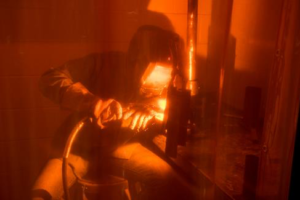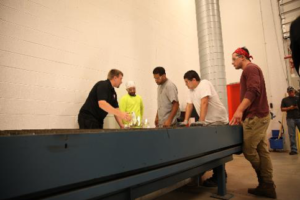By Lynn A. Kirshbaum, Deputy Director of the Combined Heat and Power Alliance
The U.S. energy sector is a major contributor to employment and job growth across the country, outpacing other sectors of the economy. At the end of March, the National Association of State Energy Officials (NASEO) and the Energy Futures Initiative (EFI) released the 2020 U.S. Energy and Employment Report, showcasing the significant employment growth across energy industries in 2019. Fuel production, electric power generation, energy efficiency, motor vehicles, and transmission, distribution, and storage combined employ nearly seven million American workers and, in 2019, represented seven percent of new job growth across the nation.
The electric power generation sector grew by over 21,200 new jobs in 2019, despite employment losses in coal and nuclear generation. Combined heat and power (CHP) generation systems represent an important component of this sector’s job growth and employment reliability. As of 2019, the CHP industry employed 30,342 workers, about three percent of total electric power generation employment.

 Source: Photos from Sheet Metal, Air, Rail & Transportation Workers (SMART) Training Centers in Pittsburgh, PA and Cleveland, OH. Read our energy efficiency jobs profiles.
Source: Photos from Sheet Metal, Air, Rail & Transportation Workers (SMART) Training Centers in Pittsburgh, PA and Cleveland, OH. Read our energy efficiency jobs profiles.
However, the COVID-19 pandemic puts this continued job growth at risk. A recent analysis of unemployment data conducted by BW Research Partnership found that more than 106,000 clean energy workers lost their jobs in March alone, negating all the 2019 job gains in the renewable energy, energy efficiency, clean vehicles, and other clean energy sectors. These losses impact not only clean energy workers and their families, but also the reliability of electric and thermal energy supply and the resilience of the country’s critical infrastructure.
According to the NASEO and EFI report, the CHP industry has a relatively diverse workforce: thirty-two percent of the CHP workforce in 2019 was female, while racial minorities made up 28 percent of CHP industry workers, compared to just 22 percent in the electric power generation sector as a whole.
In addition, the CHP industry employs people across business sectors. While professional and business services workers made up 60 percent of CHP jobs in 2019, the industry also employed a significant number in construction, manufacturing, and wholesale trade (see graph below). This large concentration of workers in the professional and business services industry is the result of small generation capacities as well as overlap with other sectors, since many companies that have a CHP system will report based on the underlying fuel source.

Source: National Association of State Energy Officials and Energy Futures Initiative. “2020 U.S. Energy & Employment Report.” March 2020.
Employment opportunities in the CHP industry increased almost four percent from 2018, contributing nearly 1,100 new jobs last year.
Industry growth is important because CHP systems are essential for the reliability of electric and thermal energy supply. This reliability supports the resilience of critical infrastructure, defined as the “assets, systems, and networks that, if incapacitated, would have a substantial negative impact on national security, economic security, or public health and safety.” Critical infrastructure includes hospitals, nursing homes, colleges and universities, military bases, multi-family buildings, schools, food processing facilities, wastewater treatment plants, lodging, police and fire stations, prisons, supermarkets, pharmaceuticals, airports, data centers, and food distribution centers.
CHP systems are vital to these facilities because CHP systems can provide continuous power and thermal energy during emergencies and grid outages. Growing job opportunities in the CHP industry suggest growing interest and investment in these technologies, and greater resilience across businesses that are crucial to human health and safety.
Earlier this year, the CHP generation industry workforce was predicted to grow in size and diversity. The NASEO and EFI report noted that industry employers expected to grow nearly four percent in 2020. However, given the economic uncertainty created by the pandemic, it is unclear whether or not these projections will be accurate over this coming year. What is clear is the important role CHP systems can play in providing reliable electric and thermal energy services to critical infrastructure facilities, improving the resilience of these facilities.
Minimizing job losses in the CHP industry will help workers, families, and businesses maintain economic stability and will enable the country’s critical infrastructure facilities to continue to develop assets that will improve the reliability of facilities’ electric and thermal energy supply, and increase their resilience in the face of weather events, grid outages, or other disasters.
The Combined Heat and Power Alliance (CHP Alliance) released a factsheet series about implementing CHP across different forms of critical infrastructure and the potential benefits of investing in generation systems. The CHP Alliance is also planning a webinar that will bring together a panel of CHP experts to discuss the technology’s future impact in critical infrastructure. Additional details on the webinar will be available in the coming weeks.
This post is the first in a three-part series about CHP and critical infrastructure. Check back soon for our posts about hospitals and nursing homes and colleges and universities.
